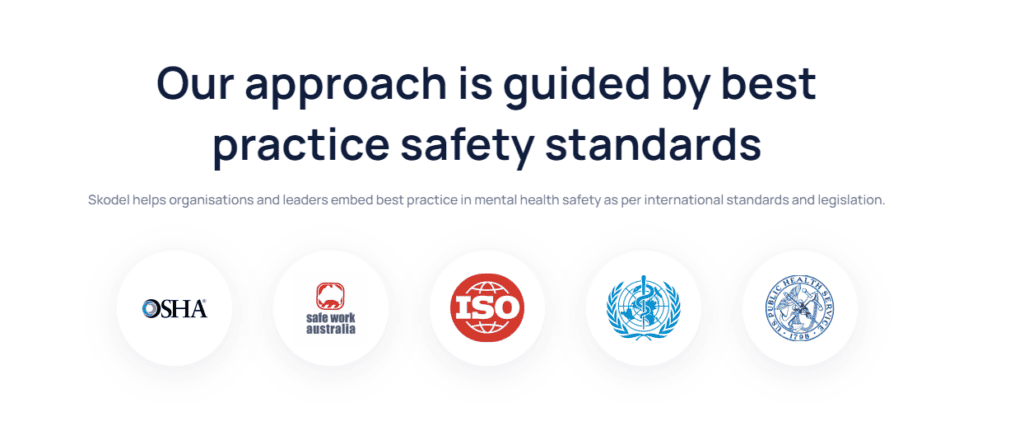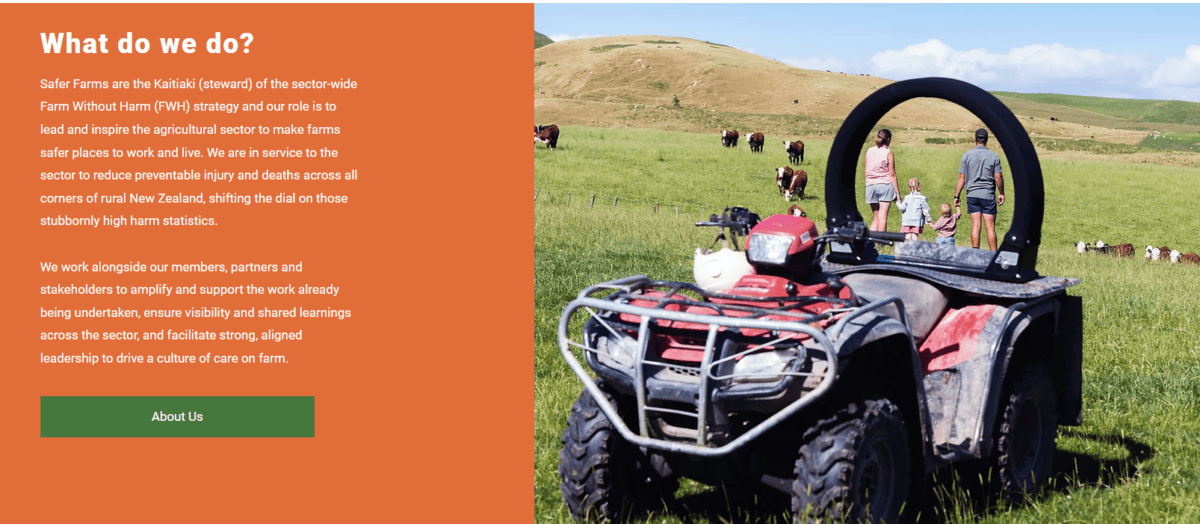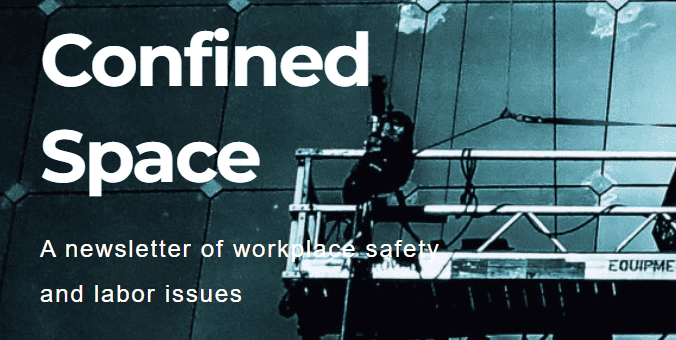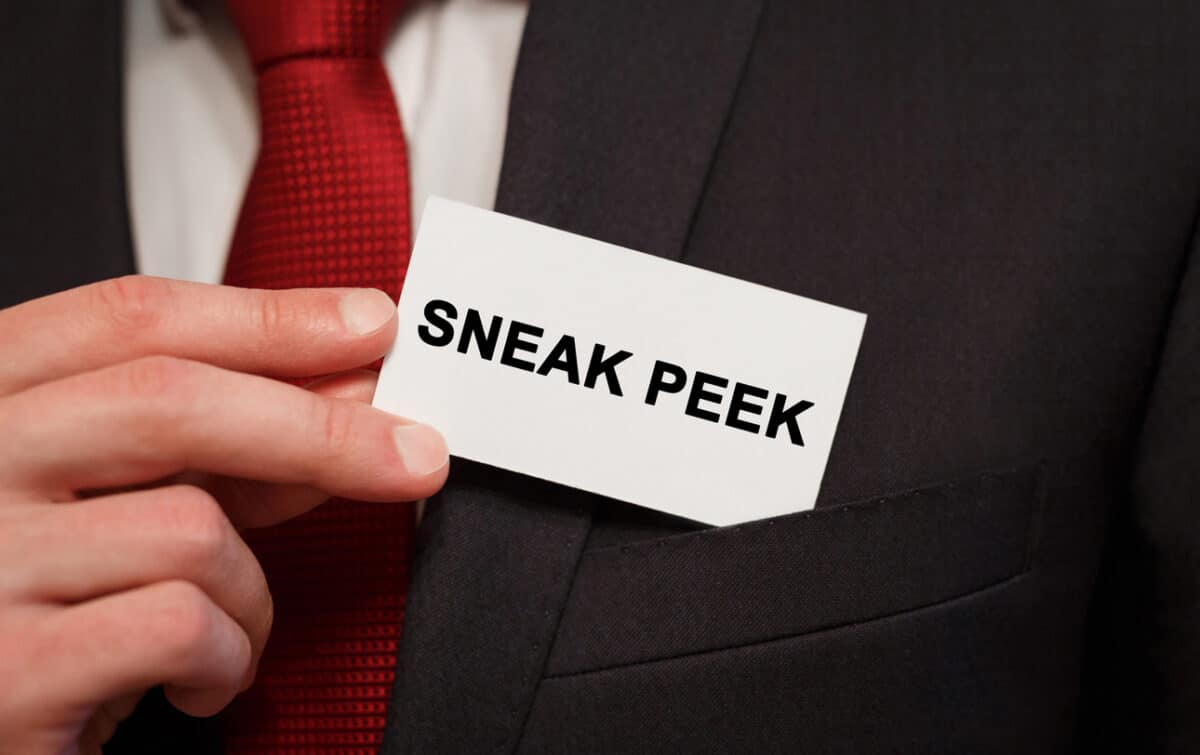Farming is a unique industry with significant occupational health and safety (OHS) challenges; it is unique because it is a blend of rural culture, working at home often with children in the workplace, isolation from social services, self-reliance and independence. It is important for the OHS advice provided and promoted to offer the most effective health and safety advice. Many farming organisations provide this information and do it well. New Zealand’s Safer Farms appears to have good intentions but may have missed the mark with their latest video.
Category: social media
Do international safety organisations endorse Skodel? Are they affiliates?
Earlier this month, a company called Skodel received support on some LinkedIn posts in relation to workplace mental health. Its website says the company has
“….a focus on developing a safe outlet for people to share mental wellbeing concerns and get linked to support.”
At the end of the company’s homepage was this image:

The inclusion of the Safe Work Australia (SWA) logo, in particular, seemed odd as I have never seen it on non-SWA websites previously.
OHS is politics
Jordan Barab is a major voice in occupational health and safety (OHS) in the United States. This year he chalks up 20 years of his Confined Spaces blog. His latest year-in-review article includes a political perspective that Australian OHS professionals and institutions should consider.
Advice for the 23rd World Congress on Safety and Health at Work
I will be attending the 23rd World Congress on Safety and Health at Work in Sydney in November 2023. After a previous attendance at the Singapore conference a few years ago, I have high hopes but also some reservations.
The Congress is a major opportunity to open our minds. We Australians may think we are leading in some areas of occupational health and safety (OHS), but other than nominated speakers, we may need to be silent about our success until after we have listened and learned about the OHS experience of others. Some delegates will have an inflated sense of importance (more than ours), but most have come to learn, and it’s these delegates on whom we should focus.
A new unicorn – the creation of a work health and safety myth
Occupational health and safety (OHS) has many myths, as do many other business disciplines. This is particularly concerning in a discipline that advocates evidence-based decision-making and pushes for peer-reviewed independent research. Sometimes these myths relate to using gym balls as office chairs or back belts or “safe lifting techniques” to reduce manual handling risks or, and this is one of my own suspicions, ankle-high safety boots that reduce the risk of ankle injuries. There are also mixed messages about sit-stand desks. (Counterarguments welcome in the comments below)
The United States seems to be in the early stages of an urban myth about police overdosing after accidental exposure to fentanyl, although this has been cooking since at least 2021. The nature of social media and the internet suggests that sometime soon, this accusation or experience will appear in Australia. Various US–based media have looked at this occupational hazard, with the latest being National Public Radio (NPR) on May 16, 2023.
Continue reading “A new unicorn – the creation of a work health and safety myth”Awards Night speeches
The WorkSafe Victoria Awards Night for 2022 contained three main speeches:
- Minister for WorkSafe – Danny Pearson
- WorkSafe CEO – Colin Radford
- Worksafe Chair – Bob Cameron
Pearson
Pearson’s speech contained a couple of elements that implied it was written by someone without a deep understanding or history of OHS in Victoria. He mentioned “Kaizen” which was a blast from the past, being associated with lots of Lean managements and Six Sigmas. These concepts are rarely heard of in OHS circles now, perhaps because the Kaizen focus in Australia was often on individual workers and efforts rather than systems of work. Pearson said:
Sometimes marketing gets in the way of OHS information
The internet and social media are peppered with articles that are ostensibly about occupational health and safety (OHS) and psychosocial health and wellbeing but are really marketing exercises. These things pop up frequently on LinkedIn. A recent example is from Lyra Health called “Workforce Mental Health Trends for 2023: Top 3 Predictions“. You can see from the title why I would be interested in obtaining the full survey report.
I chose not to download the company’s survey for the following reasons.






